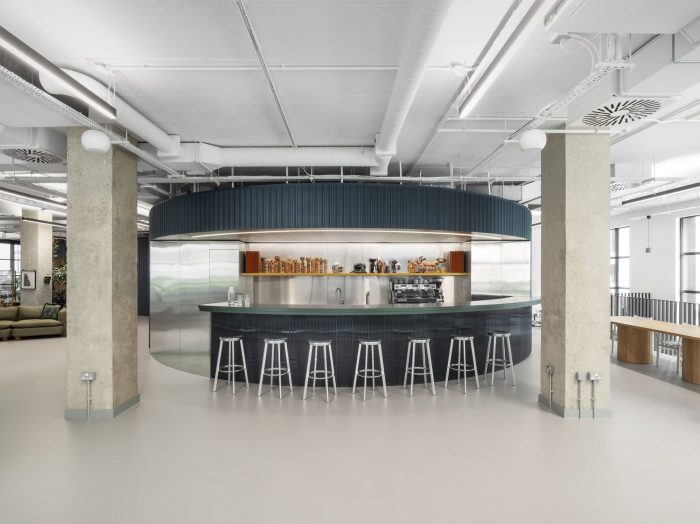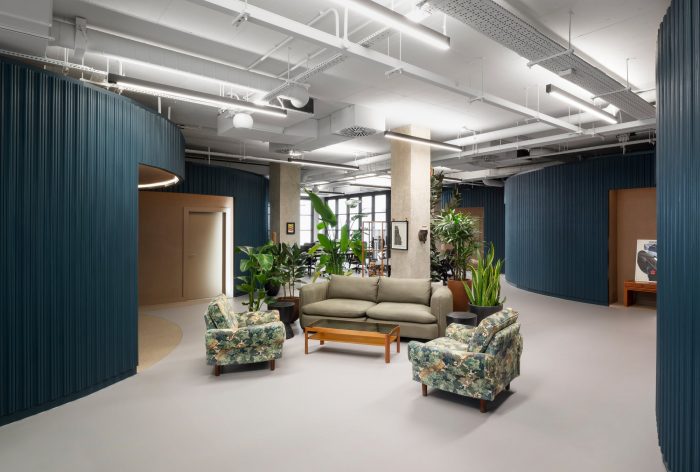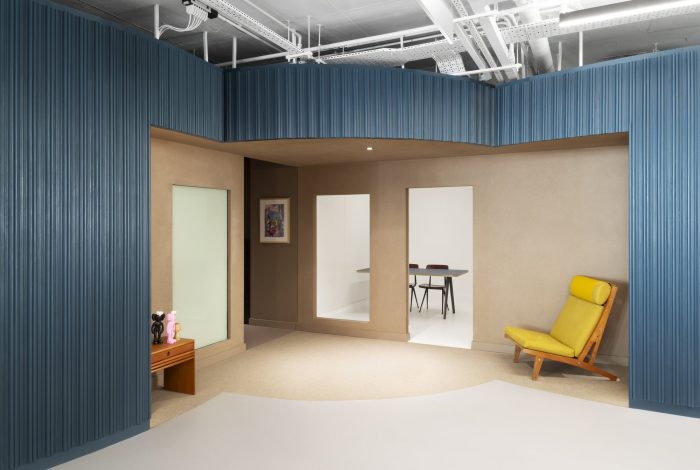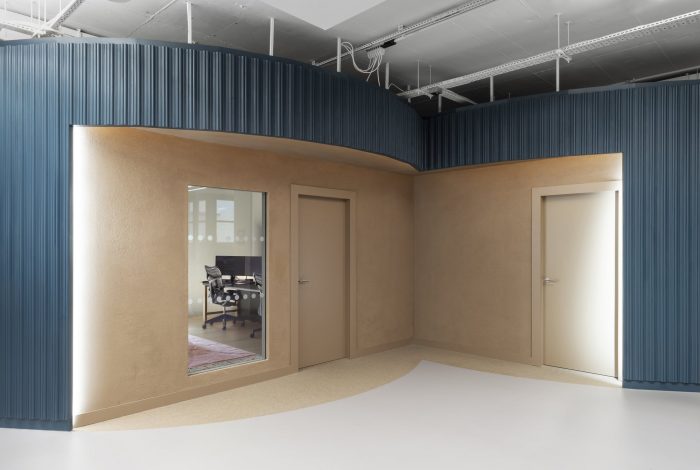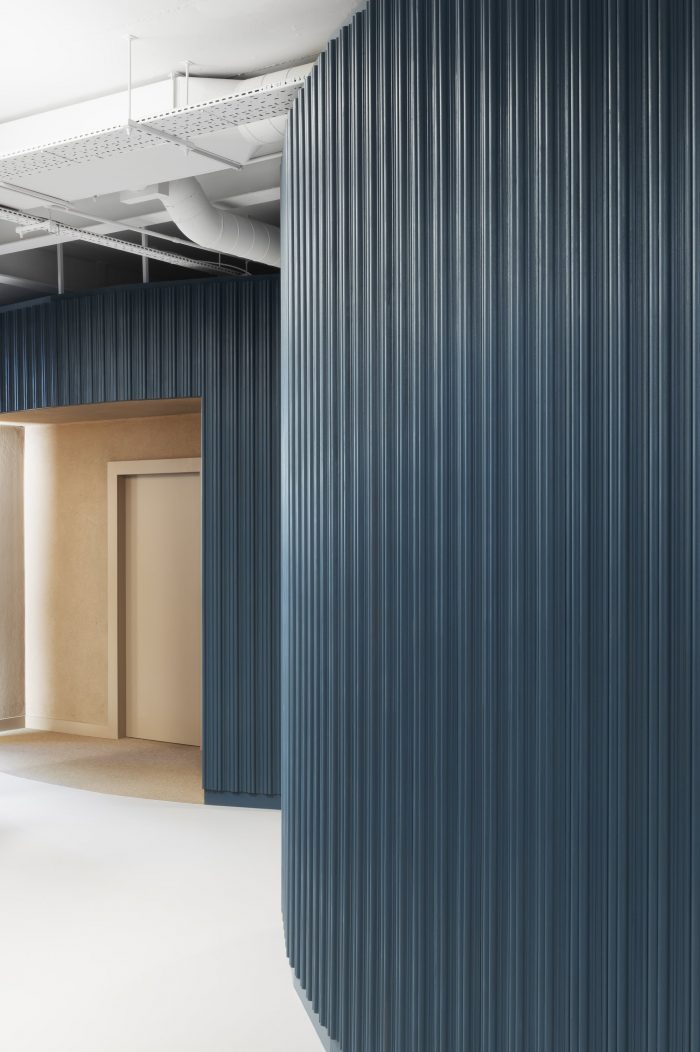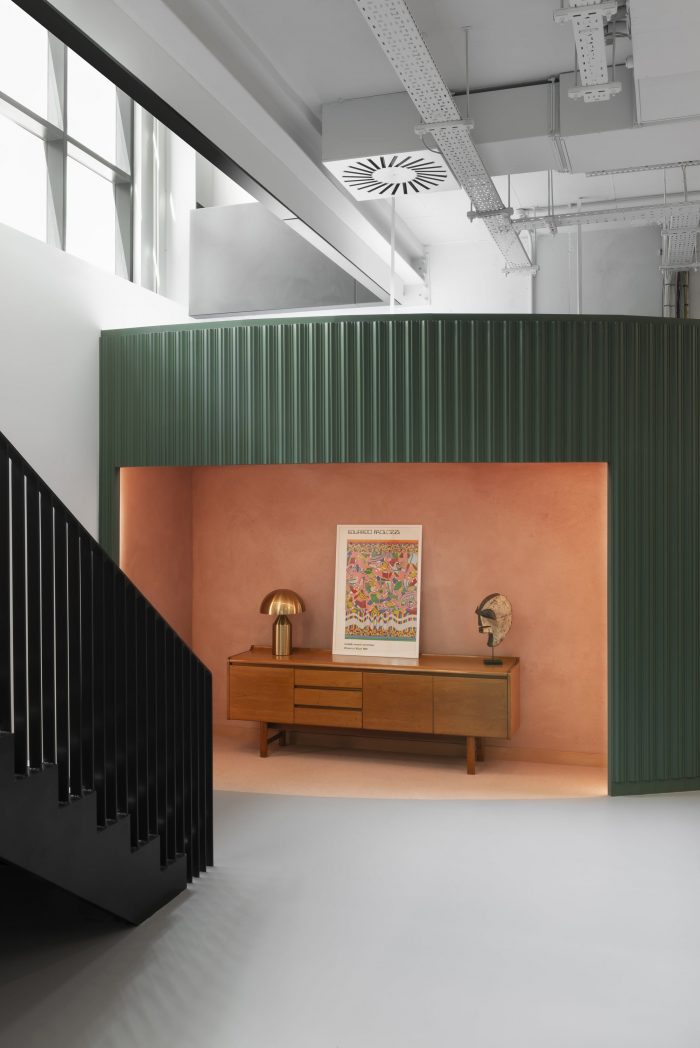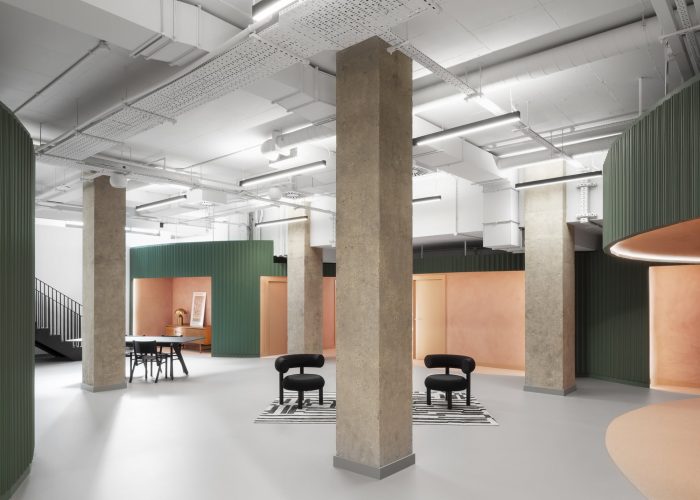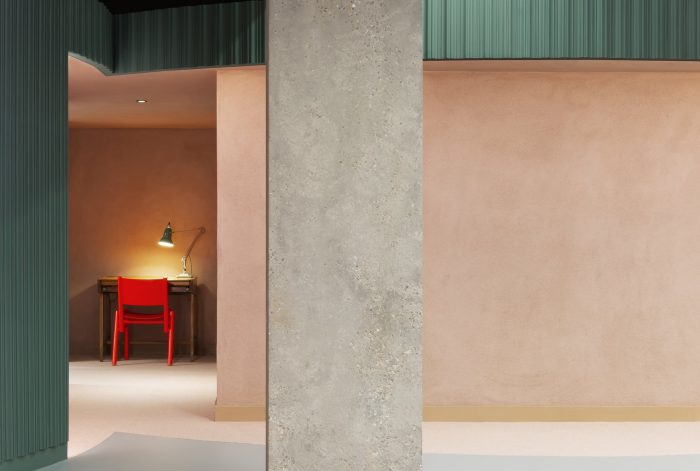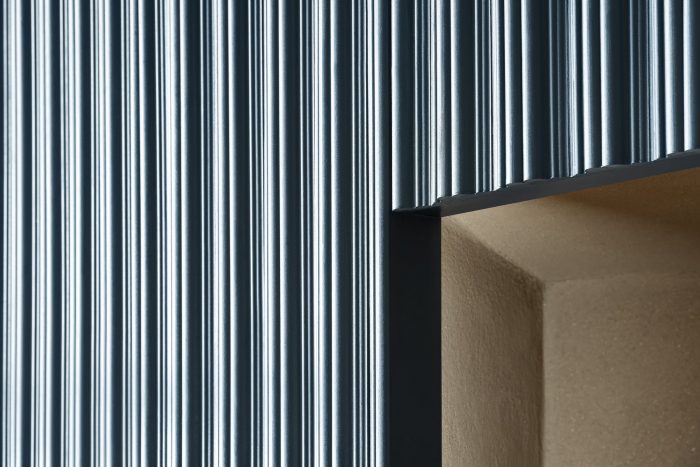Bureau de Change为伦敦东部的独立视觉效果和设计工作室Black Kite完成了一个创意工作室,策划了一系列相交和雕刻的圆柱体。这些圆柱体配置了一系列具有不同私密性的空间;从该地块过去的工业遗产中获得信息。
Bureau de Change have completed a creative studio for Black Kite, an independent visual effects and design studio in East London, curating a series of intersecting and carved-out cylinders. These configure a sequence of spaces with varying degrees of privacy; informed by the heritage of the site’s industrial past.
客户的要求是一个特定的工作环境;生产和视觉效果套房,与外部的光线和声音来源隔离。Bureau de Change对这些条件做出了回应,设计了一个空间策略,其概念来自于该地块过去作为工程师和铁铸造厂的工业历史。
The client’s brief called for a specific working environment; production and visual effects suites that are isolated from external sources of light and sound. Bureau de Change responded to these conditions by devising a spatial strategy conceptualised from the site’s industrial past as an Engineers and Iron Foundry.
传统铁窑的几何形状在提案中重现,成为分散的交叉圆圈的组成,映射在现有柱子建立的网格系统中。每个体积都包含一个长方形的空隙,在一个受控的私人环境中容纳和围住生产、编辑和色彩套件。较小的圆柱体与私人工作空间相交,创造出过渡的门槛。
Geometrical forms of traditional iron kilns reprise themselves in the proposal as a composition of dispersed intersecting circles, mapped across the grid system established by the existing columns. Each volume contains a rectangular void, accommodating and enclosing the production, editing, and colour suites in a controlled private environment. Smaller cylinders intersect the private working space to create transitioning thresholds.
从交汇处形成的起伏的外部表面被间隔开来,在体量内创造出雕刻的空间。这些空洞作为半私人的休息空间,每一个都与各自封闭的工作套间相关;在一个单一的体积内创造出双重的空间,由一堵孤独的墙分隔。切口的内部用天然粘土灰泥装饰,将圆柱体的尖锐纹理与温暖粗糙的表面并列在一起。每个切口的位置都允许在封闭的工作区、半私人的休息腔和中央开放的工作空间之间进行自然过渡。
The undulating external surface forged from the intersections was excavated at intervals, creating carved-out spaces within the volumes. These cavities function as semi-private break out spaces, each correlating to their respective enclosed working suite; creating a duality of space within a singular volume, separated by a lone wall. The interior of the cut-outs is finished with natural clay plaster, juxtaposing the sharper textures of cylinders with warm and rough surfaces. The placement of each excavation allows for a natural transition between the enclosed working areas, semi-private breakout cavities, and the central open plan working space.
居住在其中一个空洞中的厨房用不锈钢包覆,以反射光线,并在入口处作为房间的独特中心点,成为办公室的社交核心。手工制作的釉面陶瓷砖环绕着弯曲的回收塑料台面。 精心策划的家具被选择来激活空间,并创造一个家庭般的舒适氛围,放置在空腔和体积之间形成的负空间中。
The kitchen inhabiting one of the cavities is cladded in stainless steel to reflect light and act as a distinct centrepiece of the room by the entrance becoming the social core of the office. Handmade glazed ceramic tiles circumnavigate the curved recycled plastic countertop. Carefully curated furniture was selected to activate the space and create a homely and comfortable atmosphere, placed among the cavities and the negative spaces formed between the volumes.
建议的布局提供了进入一个渐进程度的多孔性和渗透性的工作空间环境,纳入并迎合了人们的偏好文化、价值观和行为。这些空间没有被分隔成不同的区域,而是无缝连接成一个平面,提供了一种通过空间层次的发现感。
The proposed layout offers access to a gradating degree of porosity and permeability work-space environments, incorporating and catering to preferential cultures, values, and behaviours of people. The spaces are not separated into different sectors but are connected seamlessly into one plan, offering a sense of discovery through the layers of spaces.
Architects: Bureau de Change Architects
Area : 1000 m²
Year : 2022
Photographs :Gilbert McCarragher
Manufacturers : Clayworks, Forbo
Lead Architect : Billy Mavropoulos
Contractors : AW Spaces
City : London
Country : United Kingdom


